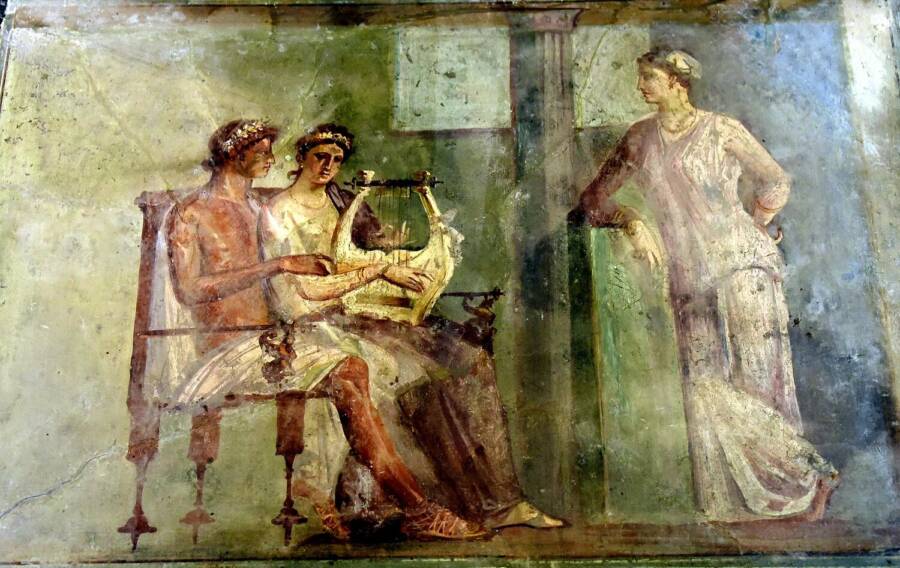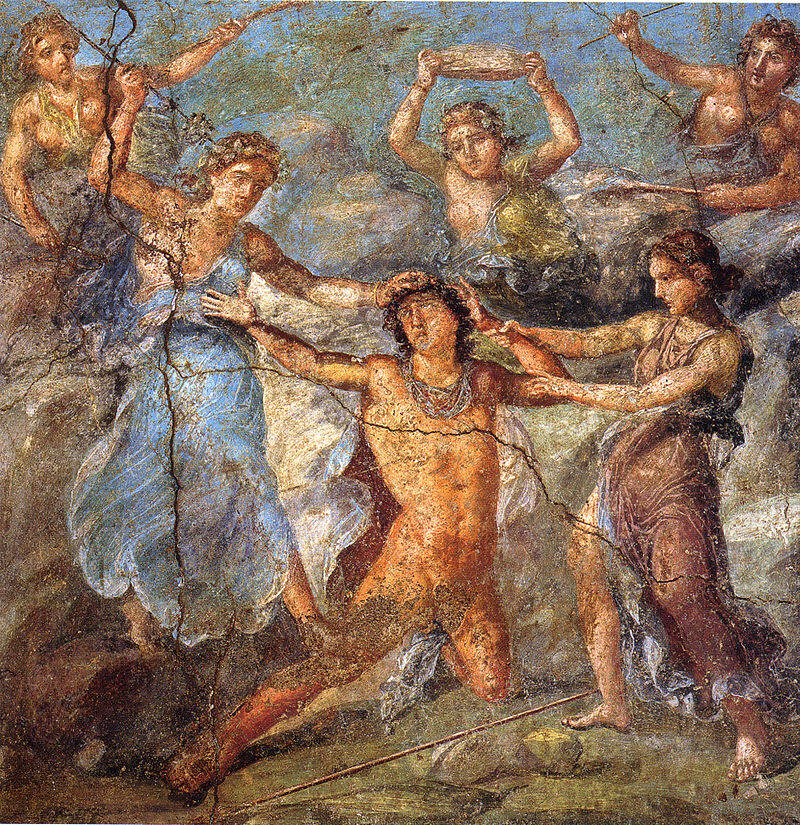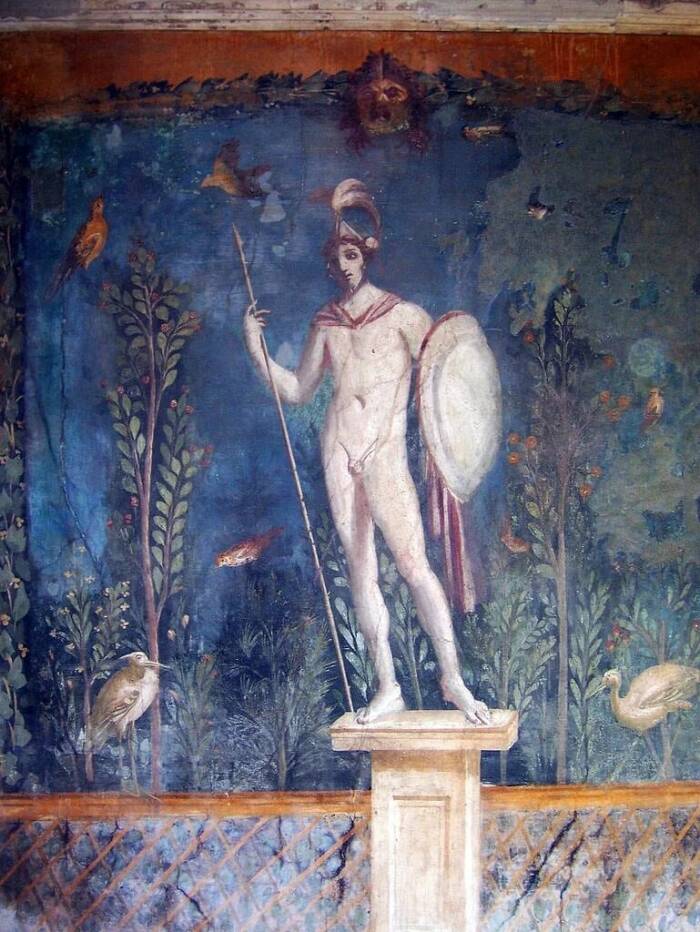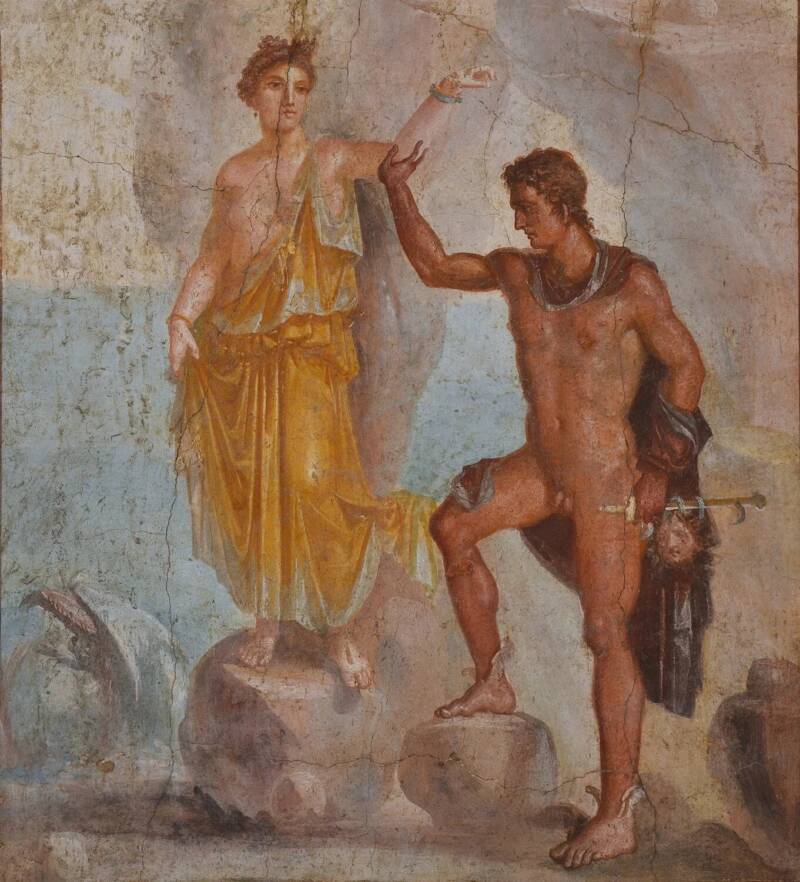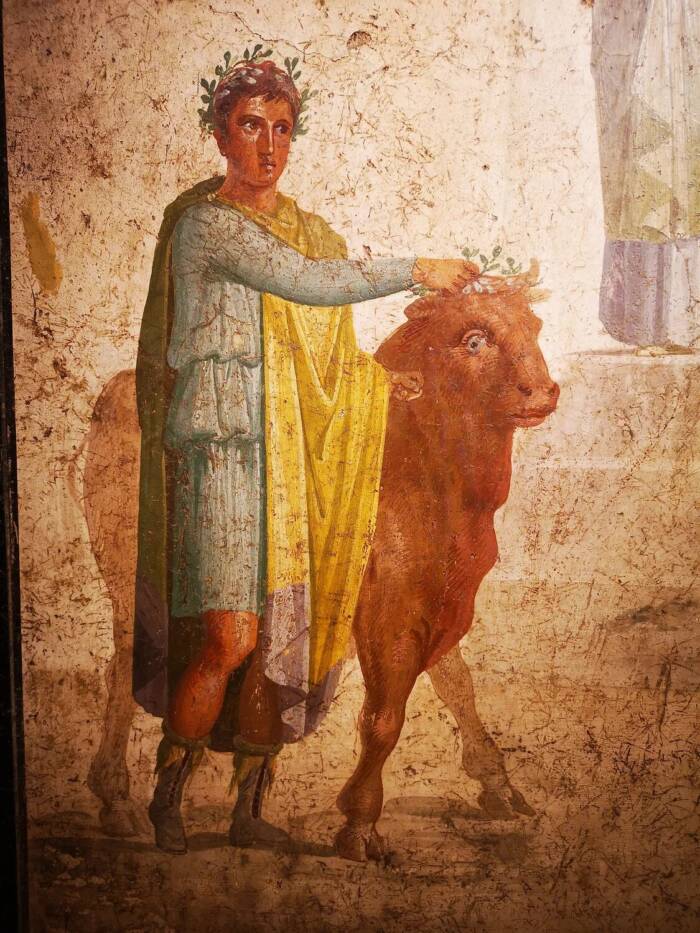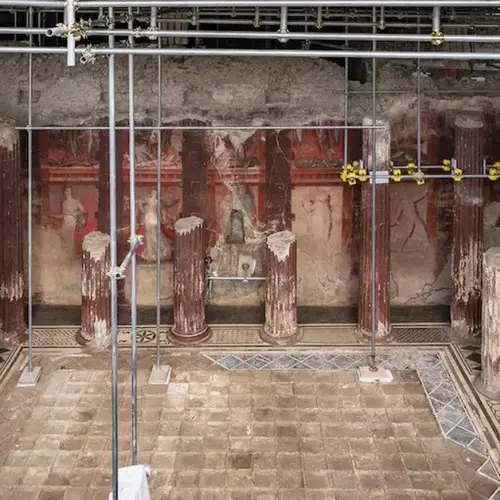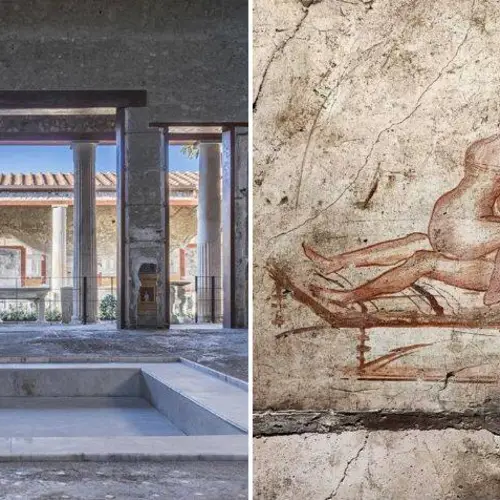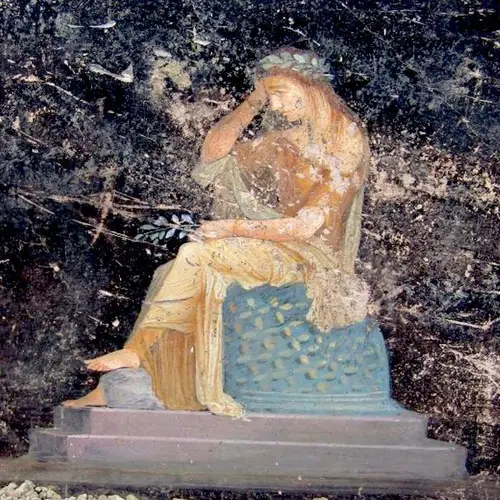From mythological images to erotic illustrations, these colorful frescoes have been stunningly well-preserved for nearly 2,000 years.
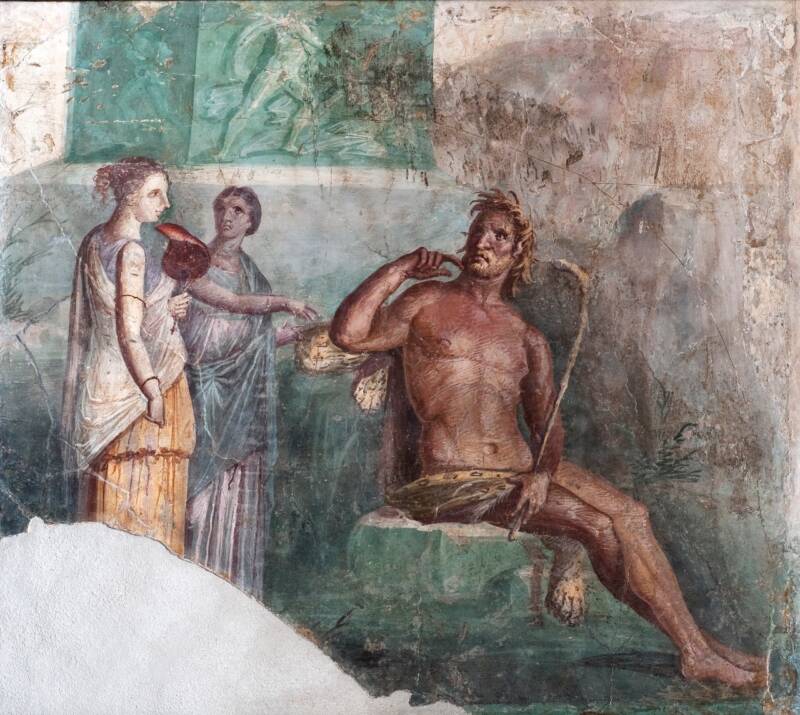
Pompeii Archaeological ParkThe Polyphemus and Galatea fresco from the Villa at the Royal Stables on Portici in Pompeii.
When Mount Vesuvius erupted in 79 C.E., it buried Pompeii’s frescoes under ash, preserving them for nearly 2,000 years.
Pompeii’s frescoes, mostly untouched until the 18th century, have become some of the most important sources for understanding ancient Roman culture. From the opulent scenes in the House of the Vettii to the mythological depictions in the Villa of the Mysteries, these artworks reflect a society where wealth, pleasure, and religion were intertwined.
Explore 33 captivating Pompeii frescoes in the photo gallery below.
The Destruction Of Pompeii Under The Ash Of Mount Vesuvius — And Its Rediscovery
In 79 C.E., Mount Vesuvius erupted near Naples, Italy. It was traditionally thought that the disaster happened in August of that year, but recent evidence has shown it probably occurred in October or November. The volcano had largely been inactive for hundreds of years, and the ancient cities and towns near its slopes were unprepared for the large-scale destruction the eruption would inflict upon them.
As ash and rock flew through the sky, terrified residents of the Roman cities of Pompeii and Herculaneum attempted to flee. An estimated 20,000 people lived in Pompeii and approximately 5,000 people resided in Herculaneum at the time, and many were luckily able to get away.
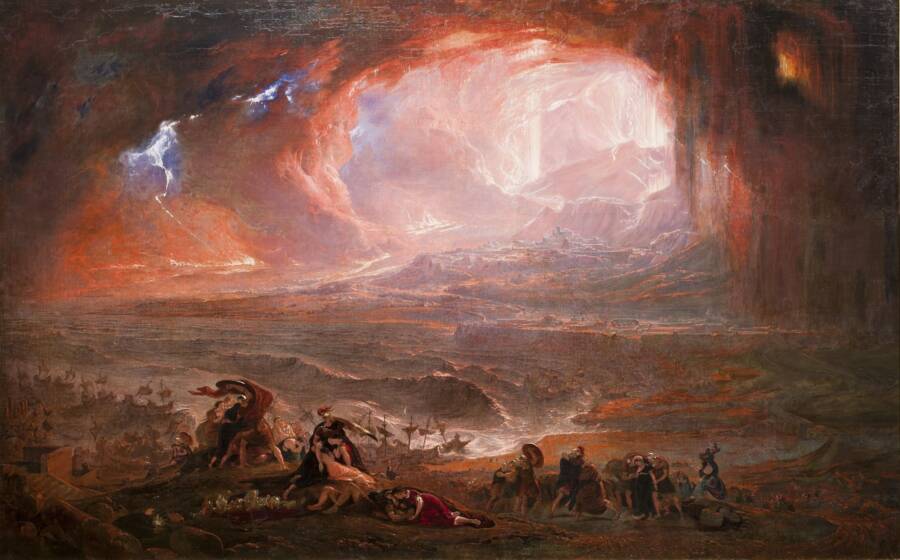
Public DomainJohn Martin's The Destruction of Pompeii and Herculaneum. Circa 1821.
However, the eruption caused some 2,000 people to die in Pompeii, and an estimated 16,000 people in the region perished in total. Some of these doomed victims unwittingly left their remains behind for future generations to rediscover — and artifacts like their frescoes.
Architect Domenico Fontana may have been the first person to rediscover Pompeii's frescoes during the late 16th century — but he was allegedly so scandalized by the erotic nature of some of the ancient paintings that he promptly covered them back up.
That said, the frescoes wouldn't stay hidden for long. In 1748, the first official excavations of Pompeii began. Workers began to unearth the ancient city from layers of dirt, ash, and other materials.
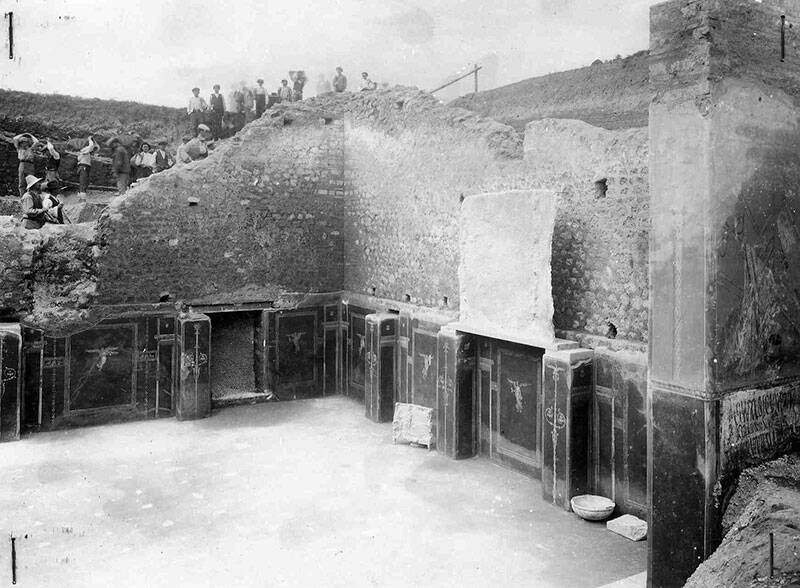
Pompeii Archaeological ParkThe excavation of the Schola Armaturarum, the likely location of Pompeii's military headquarters.
Though the early excavations were often poorly planned and documented, excavators had started to discover homes and villas by 1763. Many of these structures boasted elaborate frescoes. These frescoes, made by painting over thick, wet layers of mortar, were organized into four styles: First Style (Incrustation), Second Style (Architectural), Third Style (Ornamental), and Fourth Style (Intricate).
Starting in 1860, Italian archaeologist Giuseppe Fiorelli took control of excavations in Pompeii, formalizing the process and improving the documentation of the finds. Before long, archaeologists were able to uncover and identify some of the most famous Pompeii frescoes to date.
Discovering The House Of The Vettii, Home Of Some Of Pompeii's Most Iconic Frescoes
In 1894, workers were excavating an area in northwest Pompeii when they began unearthing one of the most ornamented dwellings ever discovered in the ancient city. The home, known as the House of the Vettii, featured five major sections decorated in elaborate frescoes, depicting mythological and sometimes erotic scenes.
The home was owned by two former slaves, Aulus Vettius Conviva and Aulus Vettius Restitutus, who had made a fortune in the wine business after they were freed. Frescoes in the brothers' home feature scenes of opulence and wealth among Pompeian elites, likely as a way for the formerly enslaved men to express their social mobility.
"Also present in [this] house are paintings that express the desire of the nouveau rich to show off their new social position by depicting various mythological and cult images for their guests," the Massachusetts Institute of Technology (MIT) reported on the ancient dwelling.
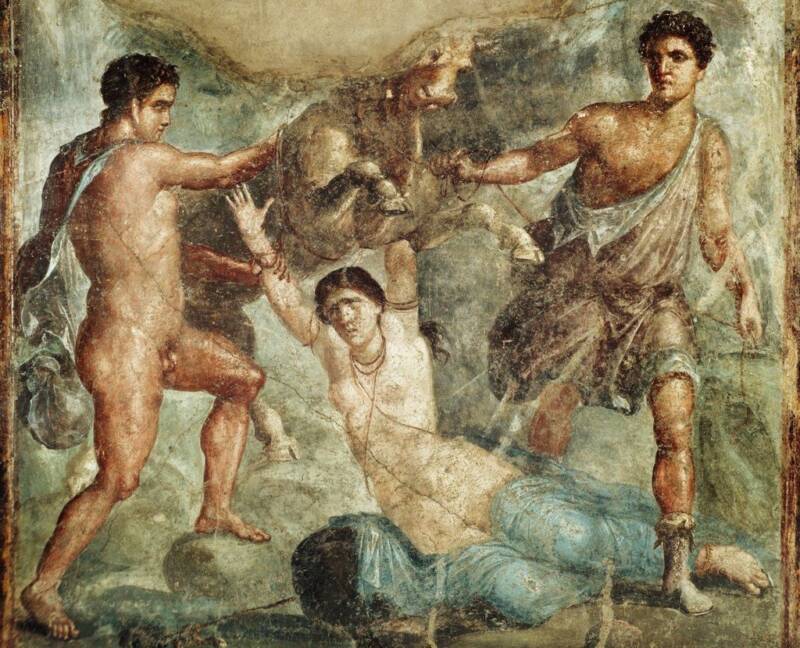
Public DomainA fresco depicting the Punishment of Dirce in the House of the Vettii.
The home's frescoes are sometimes erotic, pointing to Pompeii's prostitution industry. According to the Pompeii Archaeological Park, the two men probably arranged for prostitution to be practiced in their home. As Gabriel Zuchtriegel, Director of the Archaeological Park of Pompeii, explained in a press release about the home:
"The House of the Vettii represents the story of the Roman world encapsulated in a single house, the 'house/museum' of the 'Roman spirit': it contains mythological frescoes and sculptures made of bronze and marble of exceptional artistic quality which reflect the complex relationship between Greek models and Roman copies, as well as the economic and social life of the city.
The owners, who were freedmen and thus former slaves, testify to a level of social mobility which would have been unthinkable two centuries previously. Their wealth stemmed from commerce in agricultural produce from the territory around Pompeii, but it would appear that prostitution was also practised in their house by a Greek slave woman who belonged to the most deprived groups of society."
Recent Excavations Of Pompeii Frescoes
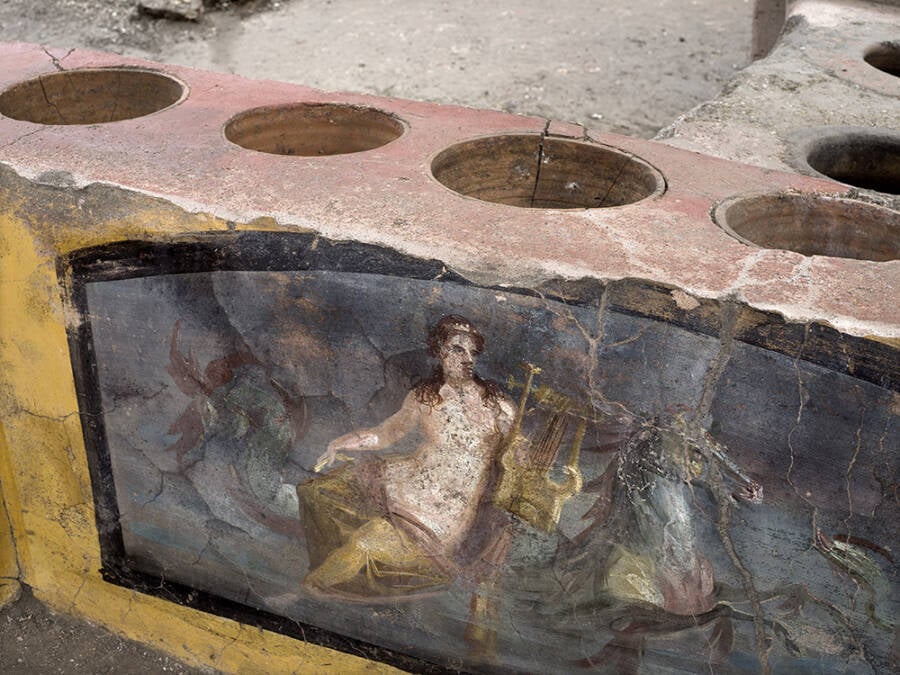
Pompeii Archaeological ParkA fresco-covered snack bar revealed in Pompeii in 2020.
From the 20th century onward, workers in Pompeii continued discovering new and exciting structures adorned with frescoes. The discovery of the Villa of the Mysteries in 1909 was especially thrilling.
Located just outside of Pompeii's northern walls, the Villa of the Mysteries served as not only a personal dwelling, but also a place of business and religious worship. Some frescoes in the villa seem to depict the initiation rites of the Dionysian mystery cult.
Though earlier excavators attempted to preserve the frescoes with wax, this ended up distorting the colors of the paintings. This eventually led to a more recent restoration project to brighten up the frescoes.
The cult of Dionysus frescoes have helped provide insights into the religious customs of Pompeians. As a center of trade, the city was religiously and culturally diverse. One fresco found in the Temple of Isis shows a priest wearing a mask of Anubis — the Egyptian god of the dead. With the city's connections to the rest of the Mediterranean region, it is no surprise that many of the frescoes feature religious themes passed down from Egyptian and Greek sources.
Other excavations in the ancient city have revealed communal spaces as well, such as a fresco-covered snack bar unearthed in 2020. The snack bar consisted of a large counter with frescoes of animals and nymphs. Experts believe that many of the depicted animals, such as ducks, were butchered and sold at the snack bar centuries ago.
Another recent find included the discovery of a "pizza fresco" in what was once a bakery. Researchers believe the fresco, which likely shows focaccia covered with fruit and an early version of pesto (perhaps a precursor to modern pizza), is a symbol of hospitality in the home.
With numerous such frescoes discovered in the city, researchers have pieced together an interesting view of Pompeians' lives.
What Do The Pompeii Frescoes Tell Us About Roman Culture?
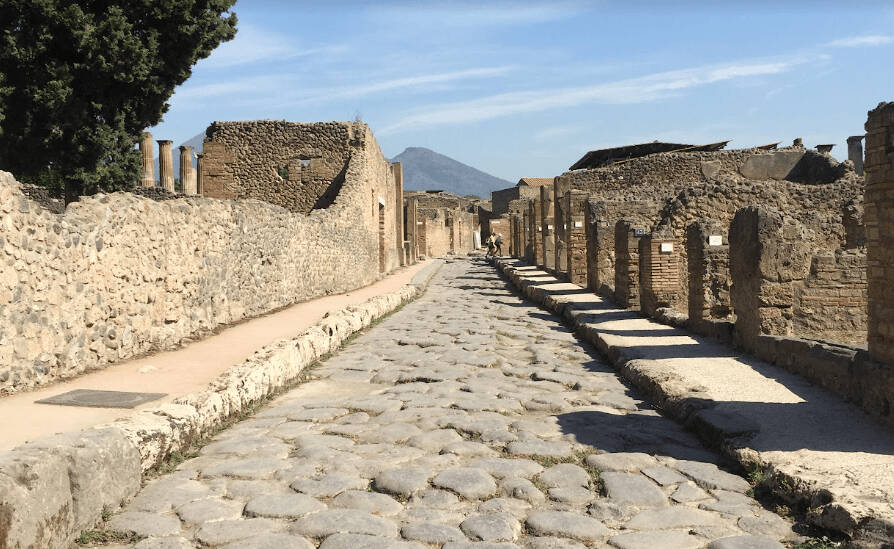
Amber MorganThe ruins of Pompeii, with Mount Vesuvius standing in the background.
Since the 79 C.E. eruption preserved the ancient city for hundreds of years, researchers have been able to get a remarkably clear picture of the lives of those who once called it home. The frescoes of Pompeii in particular have provided a window into Roman culture, reflecting the values, beliefs, and social structures of Roman society.
Many of the frescoes on display, such as those in the House of the Vettii, depict luxury and excess. Elaborate scenes of feasts, opulent banquets, and mythological depictions of deities showcase the importance of celebrating wealth and influence in a socially stratified culture.
The status of the House of the Vettii's owners as former slaves may have influenced the home's opulence, serving as a way for them to elevate their social standing and prove themselves through displays of wealth.
In contrast, other frescoes explore more intimate and spiritual themes, such as those found in the Villa of the Mysteries. The frescoes of a woman's initiation into the cult of Dionysus suggest the importance of religious practices in the private lives of Pompeii's residents.
Alongside these spiritual scenes, the numerous erotic frescoes scattered throughout the city have revealed the sexual attitudes and appetites in Pompeian society. These artworks sometimes portray explicit sexual imagery, revealing how sexuality was openly acknowledged and sometimes even celebrated in certain contexts in Pompeii.
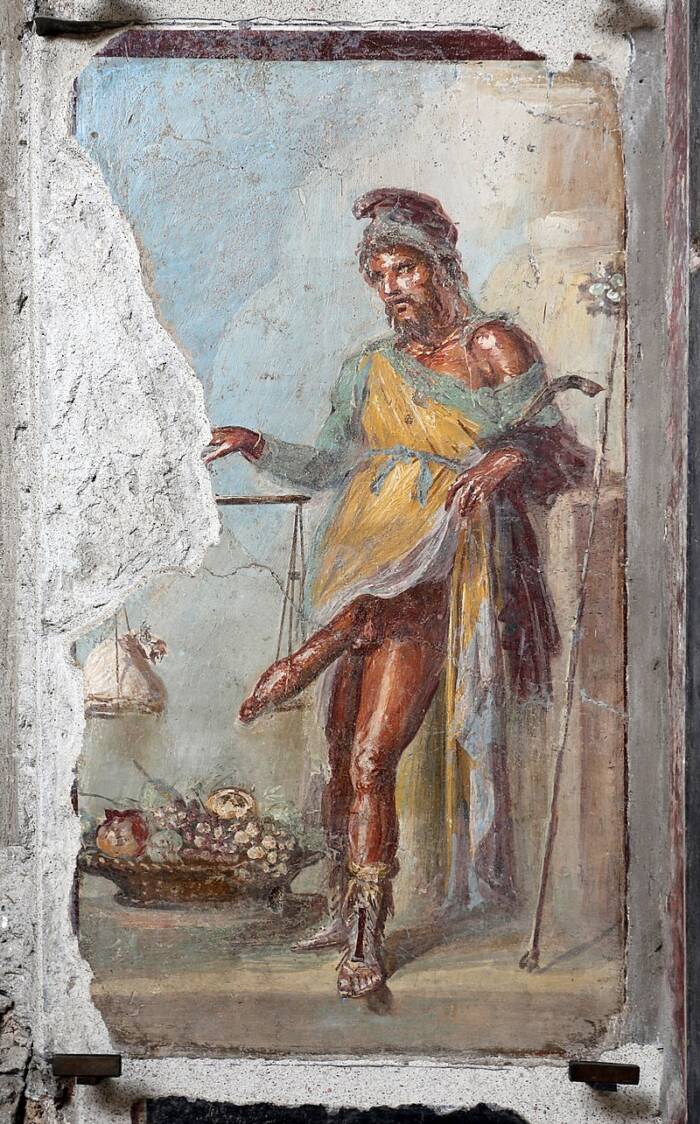
Public DomainPriapus depicted with an unusually large phallus in the House of the Vettii.
Equally telling are the more commercial-like frescoes found in spaces like the snack bar and bakery. These frescoes likely served a functional purpose in advertising products and services. In the snack bar, for example, frescoes depicting animals probably advertised food items available to customers. The pizza fresco discovered in a bakery may have also served as an artistic representation of the products made there.
Together, these frescoes offer fascinating snapshots of how ancient Romans perceived their society, revealing a complex and intriguing blend of commerce, pleasure, wealth, and ritual in Pompeii.
After reading about Pompeii's famous frescoes, learn about the raunchy graffiti discovered in Pompeii. Then, check out an elaborate Roman shrine that was recently unearthed in the ancient city.
